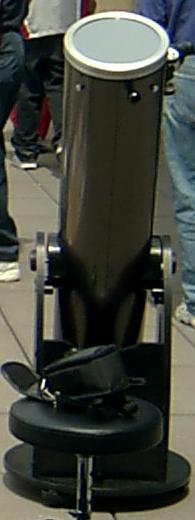 Read the article first:
Amateurs Help Find a Planet
or listen to the podcast.
Read the article first:
Amateurs Help Find a Planet
or listen to the podcast.
Quick summary: a modest telescope with CCD camera helped gather data for
a light curve of a micolensing event, effectively detecting the
lensing star, and it's Jupiter sized planet.
It is striking that the word microlensing is used to refer to a lens the size of a star, (in Star Trek parlance the Sun is 1.4 gigameters in diameter), or Jupiter (70 megameters).
And, the article suggests that an Earth sized object could have been detected (13 megameters).
Now, my telescope at home has a 250 millimeter mirror. Compare that to a gigameter. What's nine orders of magnitude between friends?
If a star is a microlens, then my scope has a femtolens, suggesting that this phallic symbol needs a new name - Richard just won't do it anymore. Perhaps Angelina, and a million will fit on the head of a pin.
It's also pretty silly to compare focal lengths. My femtoscope has a 1.5 meter focal length. The focal length of the Sun is more like 81 terameters (542 AU). That's approaching 1% of a light year. It has been proposed that creating a telescope by sending a probe out that far would be good practice for going to another star. However, it's not like you can quickly point this scope at some other object. Orbit at that distance takes a long time.
